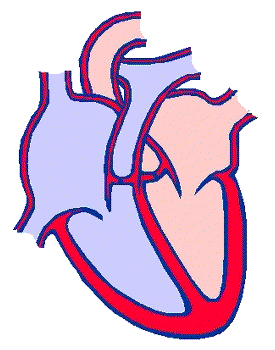
How the Heart beats
In order for the heart to function efficiently the muscles of the upper and lower chambers must contract in the correct sequence. The speed at which the heart pumps or "beats" is controlled by the hearts own built-in pacemaker.
This in-built pacemaker is made up from a group of specialised cells called the Sinoatrial node which is often abbreviated to SA node. It is situated in the upper part of the wall of the right atrium.
The SA node generates an electrical impulse which is transmitted simultaneously to the two atria (the upper Chambers of the heart) causing them to contract.It then continues down the heart along fixed pathways to a second node, called the Atrio-ventricular node, AV node for short. The AV node causes a slight delay in the electrical impulse, this allows the two atria to contract completely before the impulse causes the ventricles to start contracting.
At the end of the contractions or sytole phase of the beat, the heart relaxes briefly, this is the dystole phase. The whole process is complete in a fraction of a second.
The production of these impulses is partially controlled by a part of the nervous system known as the autonomic, nervous system which works without voluntary control. It is the hearts own in built electrical system which produces the rhythmical contraction known as heart beats.
I hope this section has helped you understand a little more about the inner workings of the heart. Considering the complexity and amount of work the heart does each day, year in, year out the reliability of this organ is astonishing. However form time to time problems can occur. So the next section touches on some or the more common problems and possible remedies.